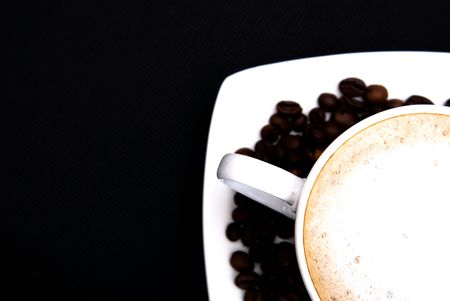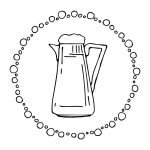1. Understanding Coffee Roasts
When it comes to enjoying a great cup of coffee, one of the biggest factors that influences flavor and aroma is the roast level. From light to dark, each roast brings out different characteristics in the coffee bean. To understand why your morning brew tastes the way it does, its helpful to know what happens during the roasting process.
What Is Coffee Roasting?
Coffee roasting is the process of heating green coffee beans until they reach a specific roast level. This process transforms the raw beans into the brown, aromatic ones we grind and brew. Roasting causes chemical changes in the beans as they are rapidly brought to high temperatures, then cooled quickly to stop the process at just the right moment.
How Roasting Affects Flavor and Aroma
The longer and hotter coffee beans are roasted, the more their original flavors from origin (such as fruity or floral notes) fade, while bolder, deeper flavors like chocolate or smoke become more pronounced. The roast level affects not only taste but also aroma, body (the feel of coffee in your mouth), and acidity.
Comparison of Roast Levels
| Roast Level | Color | Flavor Profile | Aroma | Acidity | Body |
|---|---|---|---|---|---|
| Light Roast | Light brown | Bright, fruity, floral; highlights bean origin | Sweet, citrusy | High | Light |
| Medium Roast | Medium brown | Balanced; hints of caramel, nuts, mild fruitiness | Nutty, chocolaty | Medium | Medium |
| Dark Roast | Dark brown to almost black | Bitter-sweet, smoky, bold; origin flavor is muted | Toasty, deep cocoa or spice notes | Low | Full-bodied |
The Role of Time and Temperature in Roasting
The key to achieving these roast levels lies in how long and at what temperature the beans are roasted. Light roasts are typically roasted to an internal bean temperature of about 356°F–401°F. Medium roasts go up to around 410°F–428°F, while dark roasts can reach 437°F–482°F. Each degree changes how sugars caramelize and oils develop on the surface of the bean.
This first look at roasting shows just how much science and artistry goes into every cup of coffee. Whether you enjoy a bright Ethiopian light roast or a rich French roast blend, its all thanks to how those green beans were roasted.
2. Light Roast: Bright, Fruity, and Caffeinated
Light roast coffee is a favorite among specialty coffee lovers, especially those who enjoy discovering the unique flavors that different coffee origins have to offer. These beans are roasted for a shorter amount of time, which means they retain more of their original characteristics — including higher acidity and complex flavor notes. This style of roasting is often associated with the third-wave coffee movement, which focuses on quality, transparency, and craftsmanship.
What Makes Light Roasts Stand Out?
Unlike medium or dark roasts, light roasts are roasted just until the “first crack” — a point where the beans make an audible popping sound due to internal pressure. Because they’re not roasted as long or as hot, they maintain more of their natural compounds. This results in a cup thats vibrant, crisp, and often fruity or floral in taste.
Flavor Profile
Light roasts are known for their high acidity (think citrus or green apple), lighter body, and bright flavors. You might taste hints of berries, jasmine, melon, or even tea-like notes depending on the origin of the beans.
Common Flavor Notes in Light Roasts:
| Coffee Origin | Tasting Notes |
|---|---|
| Ethiopia | Blueberry, jasmine, lemon |
| Kenya | Cranberry, blackcurrant, grapefruit |
| Colombia | Tangerine, caramel, red apple |
| Panama (Geisha) | Bergamot, peach, floral tea |
Caffeine Content
A common misconception is that darker roasts have more caffeine because of their bold flavor. But actually, light roasts tend to have slightly more caffeine by volume since less moisture is lost during roasting. So if youre looking for a bit more energy kick without the bitterness — light roast might be your go-to.
A Third-Wave Favorite
The rise of third-wave coffee shops across the U.S. has brought light roasts into the spotlight. These cafés focus on single-origin beans and manual brewing methods like pour-over or Chemex to bring out delicate flavors that would be masked in darker roasts. For many coffee lovers today, drinking a light roast isn’t just about caffeine — it’s about experiencing the story behind each bean.
![]()
3. Medium Roast: Balanced and Smooth
Medium roast coffee is often considered the most approachable option for both new coffee drinkers and seasoned sippers. Its known for its smooth, balanced flavor profile that highlights a mix of the beans’ original characteristics and the flavors developed during roasting. In American coffee culture, medium roasts are especially popular because they strike a pleasing middle ground between light and dark roasts.
Why Medium Roast is a Crowd Favorite
Unlike light roasts, which tend to be brighter and more acidic, or dark roasts, which lean toward bold and bitter notes, medium roasts offer a harmony of flavor that’s easy to enjoy. They typically feature a rounded taste with hints of caramel, chocolate, or nuttiness—flavors that appeal to a wide range of palates.
Flavor and Aroma Profile
| Roast Level | Flavor Notes | Aroma | Body | Acidity |
|---|---|---|---|---|
| Medium Roast | Caramel, Chocolate, Nutty | Smooth, Sweet | Medium | Mild to Moderate |
Common Names for Medium Roasts in the U.S.
In the United States, you’ll often see medium roast coffees labeled as:
- American Roast
- Breakfast Blend
- City Roast
- Regular Roast
These names may vary by brand, but they all point to the same general roast level that delivers a comforting and familiar taste.
Popular Brewing Methods for Medium Roasts
Because of their versatility, medium roast coffees work well with almost any brewing method. However, they’re especially great when brewed using drip coffee makers, pour-over techniques, or French press—methods commonly used in American homes and cafés.
Recommended Brewing Techniques:
- Drip Coffee Maker: Brings out balanced flavors without overwhelming bitterness.
- Pour-Over: Highlights subtle notes like caramel or citrus.
- French Press: Adds body and depth while keeping flavors smooth.
If youre looking for an everyday coffee thats neither too strong nor too light, medium roast might just be your perfect match. Its no wonder this roast level remains a staple in American kitchens and coffee shops alike.
4. Dark Roast: Bold, Smoky, and Intense
Dark roast coffee is known for its bold flavor, full body, and rich aroma. Unlike light and medium roasts, dark roasts are roasted longer at higher temperatures, which brings out deep, smoky notes and reduces the natural acidity of the beans. This process also results in a shiny, oily surface on the beans due to the oils being brought to the surface during roasting.
In American coffee culture, especially in traditional diners, dark roast has a special place. Its the classic cup of “joe” — strong, hearty, and always ready to kickstart your day. This type of roast pairs well with milk and sugar because its robust flavor cuts through added creaminess without losing its identity.
Flavor Profile of Dark Roasts
| Characteristic | Description |
|---|---|
| Body | Full-bodied and heavy on the palate |
| Acidity | Low to none |
| Aroma | Smoky, sometimes burnt or charred |
| Flavor Notes | Bitter chocolate, toasted nuts, caramelized sugar |
Popular Uses in American Coffee Culture
Dark roasts are commonly used for:
- Diner-style drip coffee: A nostalgic staple served black or with cream and sugar.
- Espresso drinks: Lattes, cappuccinos, and Americanos often use dark roasts for their bold base.
- Iced coffee: The strong flavor holds up well when chilled or diluted with ice and milk.
If you enjoy a stronger cup with less acidity and more roasted flavor, dark roast might be your go-to choice. It’s perfect for those who like a straightforward, no-nonsense cup of coffee—just like youd get at an old-school American diner.
5. Choosing the Right Roast for Your Palate
When it comes to choosing between light, medium, or dark roast coffee, it really comes down to your personal taste preferences, how you like to brew your coffee, and even how sensitive you are to caffeine. Understanding these factors can help you pick a roast that makes your daily cup of joe feel just right.
Your Flavor Preferences
If youre all about bright and fruity flavors, a light roast might be your go-to. These beans tend to highlight the original characteristics of the coffee origin—think citrusy, floral, or berry-like notes. Prefer something more balanced and smooth? A medium roast offers a classic coffee flavor with mellow acidity and a bit more body. Craving boldness and richness? Then dark roasts bring deep, smoky, and chocolatey tones that pack a punch.
Flavor Profiles by Roast Type
| Roast Level | Flavor Notes | Body | Acidity |
|---|---|---|---|
| Light Roast | Citrus, floral, fruity | Light | High |
| Medium Roast | Nuts, caramel, chocolate | Medium | Balanced |
| Dark Roast | Smoky, bitter-sweet, bold | Full-bodied | Low |
Your Brewing Method Matters Too
The way you brew your coffee can also influence which roast works best. For example:
Brewing Methods and Ideal Roasts
- Pourover or Chemex: Great for light roasts since they highlight delicate flavors.
- Drip Coffee Makers: Medium roasts shine here with their balanced profile.
- French Press or Espresso: Dark roasts work well due to their boldness and full body.
Caffeine Sensitivity
This might surprise you: light roasts actually have slightly more caffeine than dark roasts! That’s because roasting burns off some of the caffeine content over time. If youre trying to cut back on caffeine but still love a strong flavor, a dark roast might be the better fit.
Caffeine Levels by Roast (Approximate)
| Roast Level | Caffeine Content (per 8 oz) |
|---|---|
| Light Roast | 95-100 mg |
| Medium Roast | 90-95 mg |
| Dark Roast | 85-90 mg |
No matter which roast you choose, experimenting is part of the fun. Try different origins and brewing styles until you find what feels perfect for your palate.


